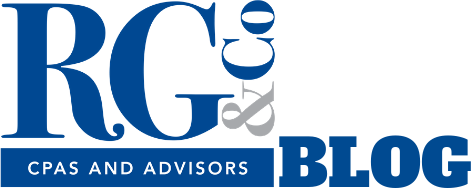The SECURE 2.0 Act was passed in 2022, and it’s designed to improve retirement savings options. It has provisions that will be phased in over several tax years. We previously released an article that discussed the provisions of the SECURE Act 2.0 that went into effect in 2023. Now, we are going to dive into some of the tax provisions that will start to phase in starting in 2024.
PLAN FEATURES
Elective deferrals generally limited to regular contribution limit (Section 603)
Catch-up contributions to a qualified retirement plan will now be subject to Roth tax treatment, except for employees with compensation of $145,000 or less who can choose either pre-tax or Roth contribution type as previous laws state.
Starter 401(k) plans for employers with no retirement plan (Section 121)
Some employers do not offer retirement plan options for their employees. Section 121 allows these employers to offer a starter 401(k) plan or a safe harbor 403(b) plan. These starter options would require that all employees, by default, be enrolled in this plan at a 3%-15% of compensation referral rate. Unlike traditional plans, the annual deferrals would mirror the IRA contribution limits, which will be $7,000 with an additional catch-up of $1,000 beginning at age 50 starting in 2024.
Emergency savings accounts linked to individual account plans (Section 127)
The option will become available for non-highly compensation employees to receive payroll deductions up to $2,500 a year into a Roth-type account for short-term emergencies. These accounts can be accessed tax-free and penalty-free.
Student Loan Repayment as Elective Deferrals for Matching Contributions (Section 110)
Many employees paying down student loans might contribute little, if any, to a retirement plan since student loan debt may be overwhelming. This Section allows employers to make matching contributions under a 401(k) plan, 403(b) plan, or SIMPLE plan for employees making qualified student loan payments incurred for higher education expenses. This section also applies to 457(b) plans for government employees.
DISTRIBUTIONS & WITHDRAWALS
Withdrawals for certain emergency expenses (Section 115)
There will be an exception to the 10% early distribution penalty on tax-preferred retirement accounts for certain distributions used for unforeseeable or immediate emergency financial expenses related to personal or family needs of up to $1,000 per year. The taxpayer has the option to repay the distribution within three years. No additional emergency distributions are allowed during the three-year repayment period unless repayment occurs.
Roth RMD updated rules (Section 325)
Roth 401(k) and 403(b) plans are no longer subject to required minimum distributions and can continue to grow tax-free in the employee’s account.
Special rules for certain distributions from long-term qualified tuition
programs to Roth IRAs (Section 126)
Currently, distributions from a 529 plan are taxable if the earnings are not used for higher education expenses. Section 126 would allow for amendments to the current law for 529 plans where the account has been open for over 15 years. The beneficiaries of the 529 plan would be permitted to roll over up to $35,000 to their Roth IRA over their lifetime. The rollovers would be subject to the annual Roth IRA contributions limits.
Exemption for certain automatic portability transactions (Section 120)
Retirement plan service providers will now be able to provide employer plans for automatic portability services, including the automatic transfer of a participant’s default IRA into the participant’s new employer’s retirement plan.
Retirement savings lost and found (Section 303)
A national online searchable database will be created at the Department of Labor to track American retirement plans. This database will help employees receive contact information from plan administrators to better keep track of potential retirement plans from over the years and different employers.
Increased Dollar Limits for Mandatory Distributions (Section 304)
The dollar limits for employers to transfer former employees’ retirement accounts from a workplace retirement plan into an IRA will increase from $1,000 – $5,000 up to $5,000 – $7,000.
This is an overview of the most significant SECURE Act 2.0 provisions that will be in effect this next year; there are others. Visit here to review the complete Act.
For questions or assistance with how these changes may impact you or your business, please contact the author or one of our tax or retirement experts at 813-875-7774. Watch for additional articles on provisions going into effect in subsequent years soon.




